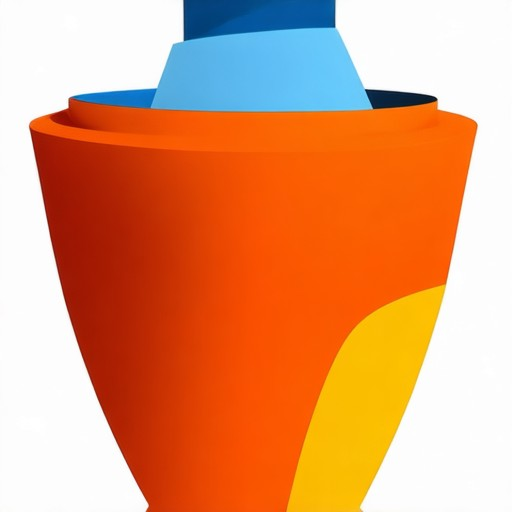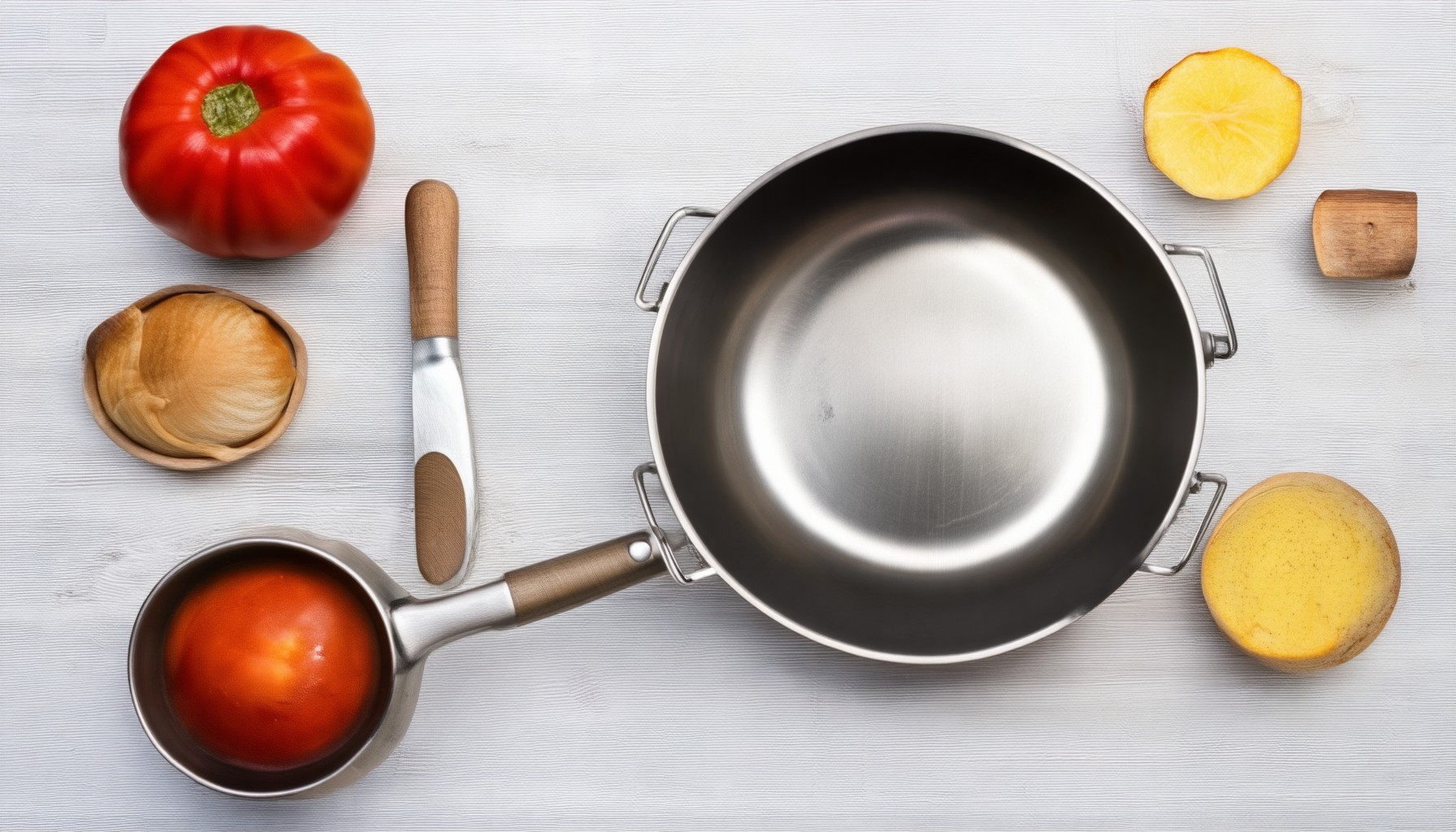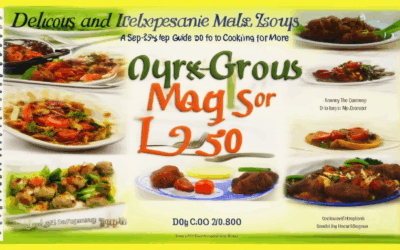When it comes to cooking, the right tools can make all the difference. Whether you’re a seasoned chef or a home cook, finding the perfect cookware set can transform your kitchen experience. However, with so many options available, it can be overwhelming to decide which type of cookware suits your needs best. From determining the best materials to understanding the differences between ceramic and stainless steel, there’s a lot to consider. This guide will walk you through the essential factors to help you choose the right cookware, ensuring your cooking becomes healthier, more efficient, and enjoyable. By making informed decisions about your cookware, you can elevate your meals and streamline your culinary processes. Let’s dive into the details and explore the top picks that cater to various cooking styles and preferences.
Key Takeaways
- Ceramic vs. Stainless Steel Cookware: Opt for ceramic for even heat and vibrant designs, or choose stainless steel for durability and a sleek appearance.
- Disadvantages of Ceramic Cookware: Be aware of chipping, scratching, the need for hand-washing, high heat sensitivity, and higher costs.
- Best Cookware for Health: Stainless steel is a top choice for safety and even heating. Ceramic-coated cookware needs careful handling. Non-stick options reduce mess but require moderate heat. Season cast iron for a safe, durable surface. Clay pots are perfect for slow, even cooking.

How to Pick the Right Cookware
Picking the right cookware can make a significant difference in your cooking experience. Here’s a step-by-step guide to help you choose the best options for your needs:
- Material Quality: Opt for high-quality materials like stainless steel, ceramic, or non-reactive cookware. These materials are durable and resistant to rusting and chipping.
- Handle Design: Ensure the handle is comfortable to grip and stays cool during cooking. Look for handles that are oven-safe and securely attached to the pot or pan.
- Size and Shape: Choose cookware that suits your stovetop type—whether gas, electric, or induction. Select sizes that match your cooking needs, such as sauté pans for versatility or large pots for soups and roasts.
- Dishwasher Safety: Check if the cookware is safe to clean in the dishwasher. Many modern cookwares are dishwasher-safe, making cleanup easier.
- Oven-Safe Handles: Ensure the handles remain safe to use in the oven, as many modern cookwares come with handles that can withstand high temperatures.
- Weight and Balance: A well-balanced cookware feels stable on the stove. Heavy cookware may seem durable, but excessive weight can be difficult to handle.
When shopping, consider visiting our cookware materials page for more details on selecting the right type of cookware. For a comprehensive guide on different types of cookware, check out our cookware types page.
What Pans to Stay Away From?
When it comes to selecting the right pan for your cooking needs, it’s essential to choose wisely to ensure optimal performance and safety. Here’s a breakdown of pans to avoid:
- Uncoated Non-Stick Pans : While non-stick pans are convenient for certain tasks, those without a durable coating can warp under high heat, making them unsuitable for stir-frying or searing.
- Thin Aluminum Pots : Thin aluminum pots may look sleek, but they conduct heat poorly and can burn liquids quickly. Opt for thicker, enameled cookware instead.
- Cheap, Flimsy Pans : These are prone to warping, scratching, and breaking. Invest in quality materials for durability and longevity.
- Unseasoned Cast Iron Pans : Without proper seasoning, cast iron pans can rust and retain flavors, affecting their performance. Ensure they’re properly prepared before use.
- Porous Surfaces : Pots or pans with porous surfaces absorb oils and foods, leading to uneven heating and stuck ingredients. Choose smooth, uniform surfaces instead.
By avoiding these pans, you can enhance your cooking experience and maintain the integrity of your kitchen tools.

Best Type of Cookware for Everyday Use
When selecting cookware for everyday use, stainless steel is often considered the optimal choice due to its versatility and reliability. Here’s why:
- Durability: Stainless steel cookware is highly resistant to rust and corrosion, ensuring longevity and safe usage over time.
- Heat Conductivity: It efficiently distributes heat across the base and sides, allowing for even cooking and preventing hotspots.
- Ease of Cleaning: While it may not be as non-stick as some alternatives, stainless steel is relatively easy to clean with routine dishwashing.
For those looking for tri-ply stainless steel, which features an aluminum core sandwiched between two layers of stainless steel, it offers improved heat retention and prevents warping during high heat. However, it is slightly more expensive than standard stainless steel options.
While carbon steel is a budget-friendly alternative with excellent heat-conducting properties, it requires more attention to drying and storage to prevent rusting. Non-stick cookware, such as ceramic or Teflon-coated pans, excels in preventing sticking but may scratch over time and is heavier than stainless steel.
Clad cookware, combining stainless steel with copper, provides exceptional heat control but adds weight. Despite these considerations, stainless steel remains the preferred choice for its balance of performance, durability, and ease of maintenance.
Consider a 12-inch skillet or saucepan as part of a versatile set, ensuring efficient use of space on your stovetop. Proper care involves handwashing to preserve the finish and storing pans upright to prevent warping. Stainless steel cookware is a worthwhile investment for everyday use, offering long-term value and reliable performance.

Should I Get Ceramic or Stainless Steel Cookware?
When deciding between ceramic and stainless steel cookware, consider factors like heat distribution, durability, weight, maintenance, and budget.
- Ceramic Cookware:
- Pros:
- Even heat distribution for consistent cooking.
- Durable and resistant to scratches.
- Available in various colors and designs.
- Non-stick surfaces for easy cooking.
- Cons:
- Heavy and can chip easily.
- Requires hand-washing to prevent cracks.
- Pros:
- Stainless Steel Cookware:
- Pros:
- Rust-proof and long-lasting.
- Good heat conductor for quick cooking.
- Easily cleaned in the dishwasher.
- Cons:
- Can react with acidic foods.
- Less effective non-stick surfaces compared to ceramic.
- Generally more expensive.
- Pros:
Choose ceramic if you prioritize even heat and design variety. Opt for stainless steel if you want durability, ease of cleaning, and a modern look. Consider your budget and personal preferences to make the best choice for your kitchen.
What is the Disadvantage of Ceramic Cookware?
Ceramics cookware offers several advantages, but it also has some notable drawbacks. Here are the key disadvantages:
- Chipping and Scratching : Ceramic cookware is prone to chipping and scratching, especially if handled roughly or subjected to impacts. This makes it less durable compared to other materials like stainless steel or glass.
- High Heat Sensitivity : While ceramic cookware can handle high temperatures, prolonged exposure to extreme heat can cause the non-stick coating to degrade, reducing its effectiveness over time.
- Not Dishwasher-Safe : Most ceramic cookware requires gentle hand washing due to its delicate surface. Putting it in the dishwasher can lead to damage or discoloration, which is why it’s often recommended to wash it by hand.
- Limited Compatibility with High Heat Sources : Although many ceramic cookware pieces are designed for use in ovens, they may not always perform well in extremely high heat conditions, which can affect cooking performance.
- Weight and Fragility : Ceramic cookware tends to be heavier and more fragile compared to other materials, making it less convenient for frequent use or when traveling.
- Cost : High-quality ceramic cookware can be expensive, limiting its accessibility for some consumers.
These factors highlight why ceramic cookware may not be the best choice for everyone, particularly for those who prioritize durability or require frequent dishwasher use.

What is the Healthiest Cookware to Use?
When selecting cookware, prioritizing health and safety is essential. Here’s a breakdown of the best options:
- Stainless Steel: Known for its durability and resistance to rust, stainless steel is a safe and versatile choice. It heats evenly and is compatible with various cooking methods.
- Ceramic-Coated Cookware: Offers a non-stick surface and vibrant colors. However, be cautious as the coating may chip, potentially releasing harmful substances. Proper care is needed to maintain its integrity.
- Non-Stick Cookware (e.g., Teflon): Provides an easy-release surface, reducing mess. Use moderate heat and avoid prolonged exposure to high temperatures to prevent damage to the coating.
- Cast Iron: A traditional option with excellent heat conductivity. It requires regular seasoning to prevent rusting and maintain a safe cooking surface.
- Clay Pots: Ideal for slow cooking, clay retains heat well and promotes even cooking. While heavy, they are durable and natural, making them a good choice for extended cooking sessions.
Consider environmental impact and maintenance needs when choosing. Stainless steel and cast iron are long-lasting and safer options, while ceramic and non-stick require more attention. Your cooking habits and preferences will guide the best choice for your kitchen.





0 Comments